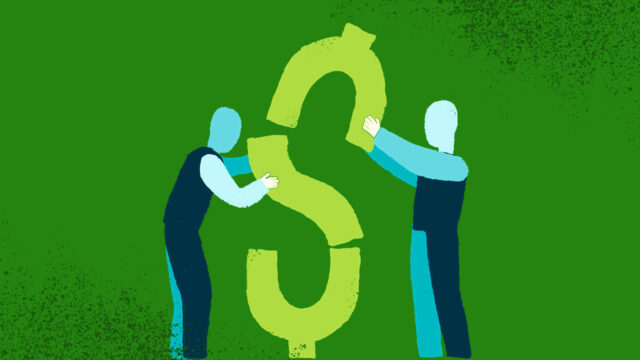How to stop the cycle of robbing Peter to pay Paul
Breaking free from the cycle of paying one debt and incurring another requires a thoughtful approach to managing your finances.

Many people find themselves stuck in a frustrating cycle of borrowing money to cover immediate expenses, only to end up needing more loans to pay off previous debts. This pattern of “robbing Peter to pay Paul” can create significant financial stress and instability.
Breaking free from this cycle requires a thoughtful approach to managing your finances. Here’s a step-by-step guide to help you regain control and achieve long-term financial health.
1. Assess Your Financial Situation
The first step in breaking the cycle is to get a clear picture of your financial situation. This includes all your sources of income, your monthly expenses, and a list of all your debts, including their interests, as well as any savings, investments, or valuable property you own.
Creating a detailed overview will help you understand where your money is going and where adjustments are needed.
2. Create a Realistic Budget
A well-structured budget is crucial for managing your finances effectively. Here’s how to create one:
- Track Your Spending: Use budgeting tools or apps to record and monitor where your money goes each month.
- Set Priorities: Categorise your expenses into needs (e.g., rent, utilities) and wants (e.g., dining out, entertainment). Focus on covering essential expenses first.
- Allocate Funds: Based on your income, assign specific amounts to each category of spending and prioritise essential expenses.
3. Build an Emergency Fund
One of the primary reasons people borrow from one person to the other is due to a lack of savings. Having an emergency fund acts as a financial cushion for unexpected expenses, reducing the need to borrow.
To build one, aim to save a small, manageable amount each month, gradually increasing your savings over time.
4. Develop a Debt Repayment Strategy
To escape the cycle of borrowing, you need to address your existing debt. Consider the following plans for repaying what you owe:
- Debt Snowball Method: Focus on paying off your smallest debt first while making minimum payments on larger debts. Once the smallest debt is paid off, move on to the next smallest. This method can build momentum and motivation.
- Consolidation: If you have multiple high-interest debts, consider consolidating them into a single loan with a lower interest rate. This can simplify your payments and potentially reduce your total interest costs.
- Debt Avalanche Method: Prioritise paying off debts with the highest interest rates first. This approach saves money on interest over time.
5. Seek Professional Assistance
If you’re overwhelmed by debt and unsure of where to start, seeking professional help can provide valuable guidance. Financial advisors and credit counsellors can provide personalised advice, help you develop a debt management plan, assist with budgeting and negotiate with creditors if necessary.
6. Increase Your Income
If your current income isn’t sufficient to cover your expenses and debt payments, you should look for ways to increase your earnings. You could achieve this by taking up side jobs, selling items you no longer need for extra cash as well as pursuing further education to qualify for promotions and higher-paying positions.
7. Develop Good Financial Habits
Maintaining healthy financial habits can prevent future borrowing and ensure long-term stability. You can practice this by living within your means, planning for large expenses, and regularly reviewing your budget, savings, and debt repayment plan to ensure you’re staying on track.
8. Educate Yourself on Personal Finance
Improving your financial literacy is key to making informed decisions and avoiding debt pitfalls. Educate yourself on personal finance topics, such as budgeting, investing, and credit management. There are many resources available, from books and online courses to podcasts and financial blogs.
